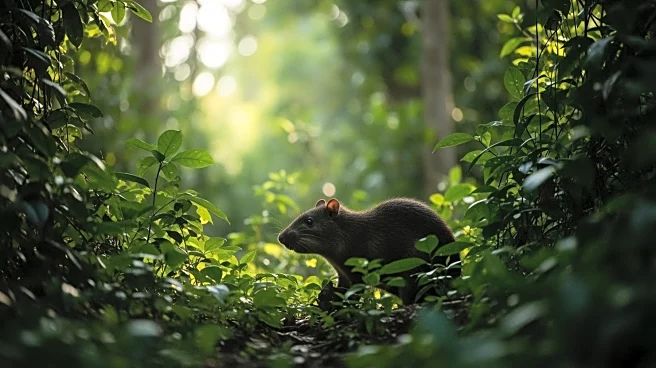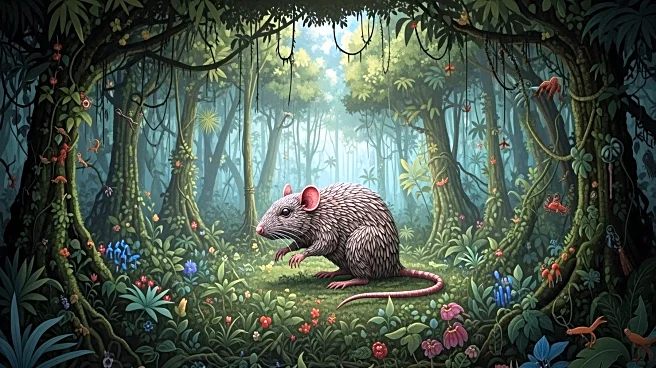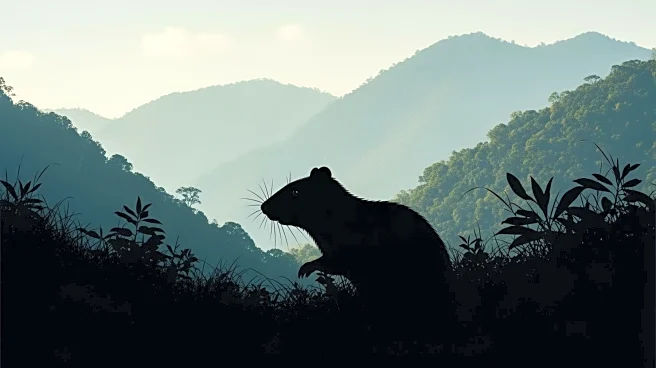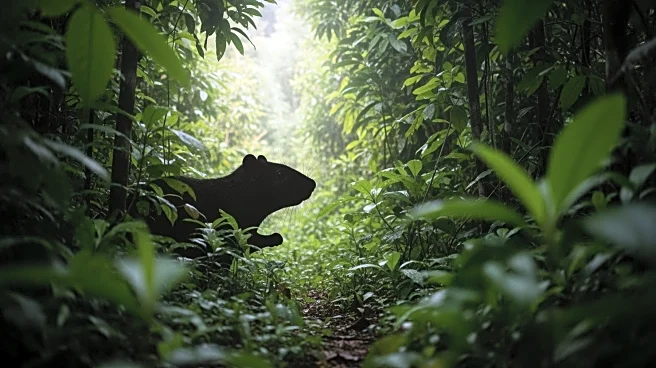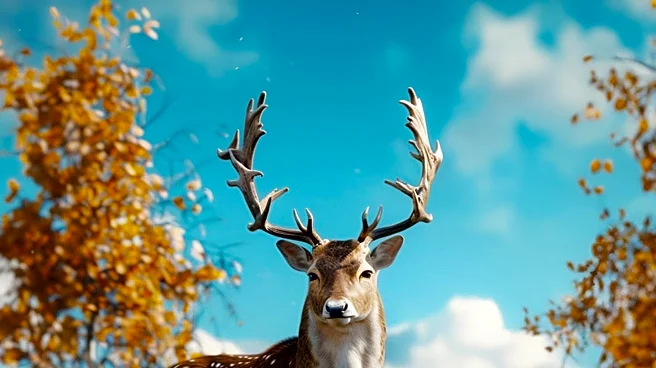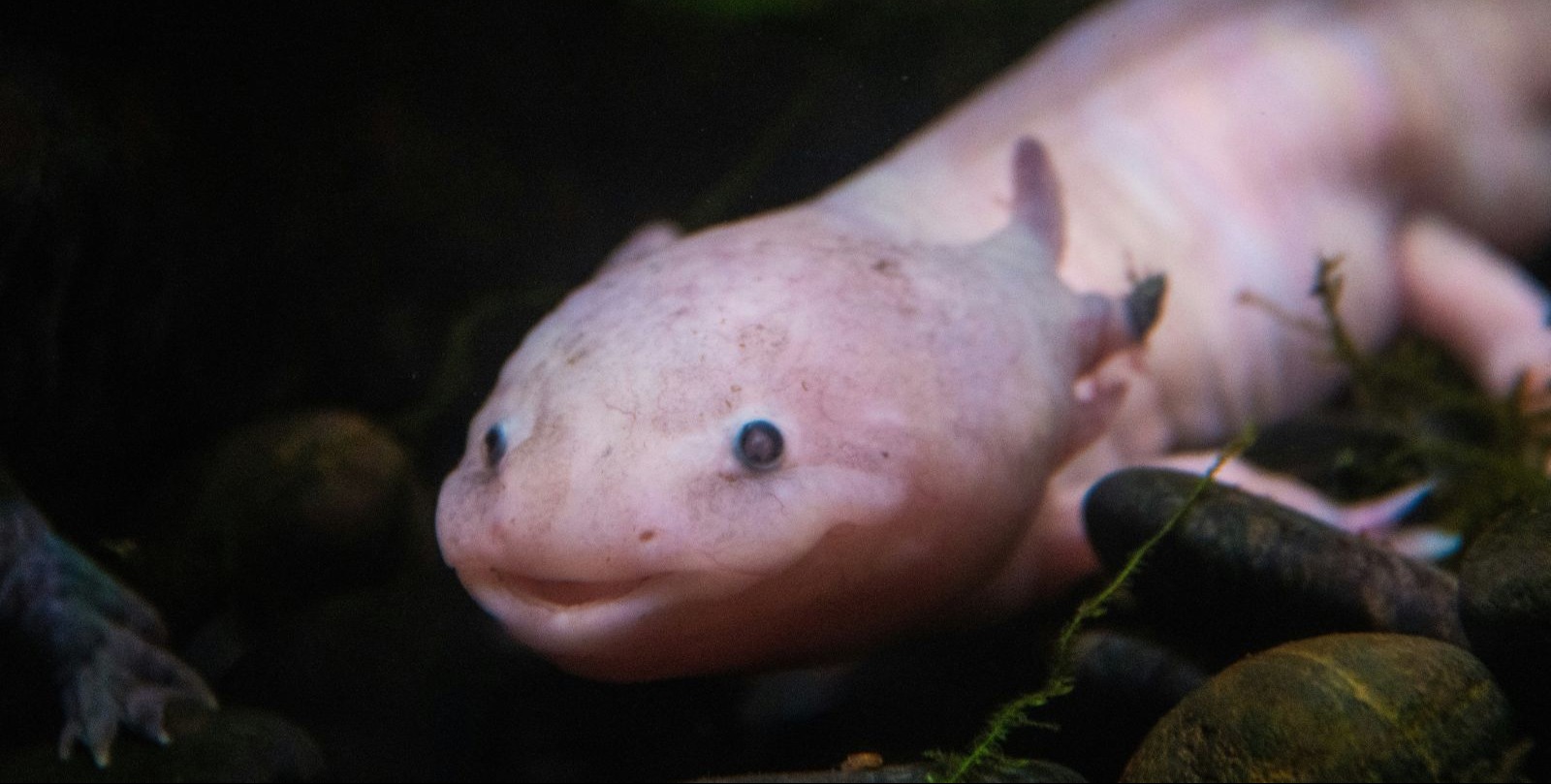What's Happening?
František Vejmělka, a doctoral student from the Biology Centre of the Czech Academy of Sciences, has rediscovered the Subalpine Woolly Rat (Mallomys istapantap) in the highlands of New Guinea. This species,
one of the largest rodents in the world, was previously known only from museum specimens and had not been observed in the wild for 30 years. Vejmělka's expedition has provided the first photographs and video footage of the rat in its natural habitat, along with biometric measurements and data on its diet and behavior. The discovery highlights the rich biodiversity of New Guinea's remote highlands, which remain largely unexplored.
Why It's Important?
The rediscovery of the Subalpine Woolly Rat underscores the importance of biodiversity research in tropical mountain regions, which are often underexplored compared to other global habitats. This finding not only enriches scientific understanding of New Guinea's unique wildlife but also emphasizes the need for conservation efforts in these areas. The collaboration with indigenous communities during the research process also highlights the role of local knowledge in scientific discoveries, fostering awareness and protection of natural heritage against threats like mining.
What's Next?
The findings from Vejmělka's expedition have been published in the scientific journal Mammalia, potentially paving the way for further research into New Guinea's mammalian diversity. The collaboration with local tribes may continue to play a crucial role in future expeditions, enhancing conservation efforts and scientific understanding of the region's biodiversity. As interest in tropical mountain ecosystems grows, more studies may focus on the unique species inhabiting these areas.
Beyond the Headlines
The rediscovery of the Subalpine Woolly Rat raises questions about the extent of undiscovered biodiversity in tropical mountain regions. It also highlights the ethical considerations of involving indigenous communities in scientific research, ensuring that their knowledge and interests are respected and integrated into conservation strategies. The study may inspire similar collaborative efforts in other underexplored regions, promoting sustainable land management and biodiversity preservation.
